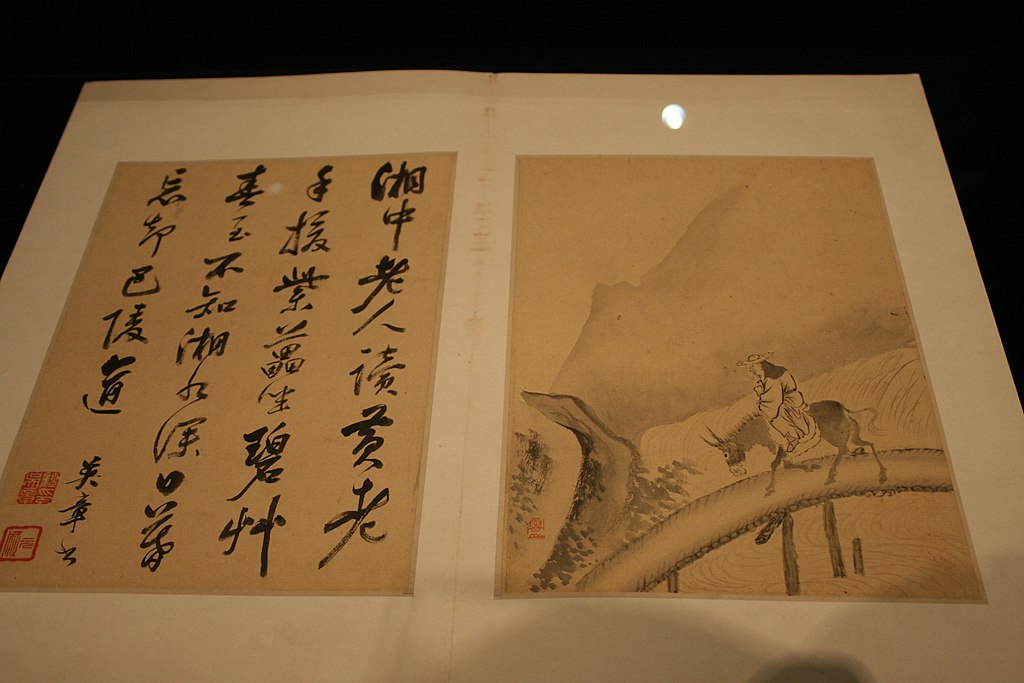Introduction
In the vast tapestry of human culture, certain art forms stand out as true marvels, encapsulating the essence of an entire civilization reflected in classic Chinese painting.
Classic Chinese painting is undoubtedly one such gem—a timeless art form that transcends centuries, speaking eloquently of China’s rich history and profound cultural heritage. On The Wellix we will explore this world. Let’s go.
A Brush with History: Classic Chinese Painting
Setting the Stage
To truly appreciate Chinese painting, we must first step back in time. This art form finds its roots deep within the annals of China’s history, tracing its origins as far back as the Neolithic period. Over the millennia, it evolved alongside the country’s dynastic changes, political developments, and cultural shifts.
This form of art has been greatly influenced by the philosophies and aesthetics of the time. Each dynasty left its unique mark on this art form, resulting in a diverse range of styles, techniques, and themes. The Tang Dynasty, for example, was known for its vibrant depictions of nature, while the Song Dynasty favored delicate landscapes.
The Essence of Chinese Brushwork
Crafting Beauty with Every Stroke
At the heart of this craft lies the brushwork. The Chinese brush, often made of animal hair, is used in conjunction with ink and paper to create intricate masterpieces. The combination of these elements allows artists to convey not only the subject matter but also their own emotions and artistic essence.
The brushwork is characterized by its fluidity, grace, and control. Each stroke is carefully considered, and there’s an emphasis on spontaneity, where imperfections are often embraced as part of the artwork’s charm.
Themes and Subjects
From Nature’s Bounty to Historical Narratives
Classic Chinese painting draws inspiration from a wide range of subjects. Nature plays a prominent role, with landscapes, birds, flowers, and animals often featured. These depictions are not mere representations but rather poetic expressions of the natural world.
Beyond nature, Chinese painting also encompasses historical narratives and portraits. These works provide insight into the lives, legends, and traditions of the Chinese people throughout history.
Philosophy and Symbolism
Unlocking Hidden Layers of Meaning
Chinese painting is deeply rooted in philosophy and symbolism. Confucianism, Daoism, and Buddhism have all left their mark on the art form. A simple landscape may carry profound metaphors, inviting viewers to contemplate deeper meanings.
The flowing rivers and mist-shrouded mountains often symbolize the ever-changing nature of life, while the solitary pine tree stands for resilience and longevity. Chinese painting invites us to explore not just the surface but also the layers of cultural and spiritual significance within.

The Concept of Void in Chinese Classical Painting
The concept of “the void” holds profound significance. Known as “xu” in Chinese philosophy and art, it represents more than just empty space; it embodies the essence of existence. The void is not a mere absence but a canvas for imagination, inviting viewers to co-create with the artist.
It is the negative space between brushstrokes that gives life to the subject, fostering harmony and balance. The painters masterfully employ the void to convey emotions, allowing the mind to wander within the open spaces, finding tranquility, and experiencing the interconnectedness of all things in this exquisite artistic tradition.
Famous Painters
Celebrating Visionaries of the Classic Chinese Painting
Throughout history, China has produced a pantheon of legendary painters, each leaving their indelible mark on the canvas. Artists like Gu Kaizhi, Shen Zhou, and Zhang Daqian are celebrated for their contributions to the world of art and culture.
Their signature styles and iconic works continue to inspire artists and enthusiasts alike, serving as a testament to the enduring legacy of Chinese painting.
Revival and Modern Interpretations of Classic Chinese Painting
Classic Artistry in a Contemporary World
Classic Chinese painting is not a relic of the past. It has experienced a revival in the modern world, with artists both in China and abroad embracing its traditions while adding innovative touches.
Contemporary Chinese painters use traditional techniques to create stunning works that resonate with today’s audience, showcasing the enduring appeal and adaptability of this remarkable art form.
Conclusion
In the intricate brushwork of classic Chinese painting, we find a profound connection to China’s history, culture, and philosophy. It’s a visual journey through time, a testament to human creativity, and a reminder of the enduring power of art to transcend boundaries.
As you delve deeper into the world of Chinese painting, let each brushstroke guide you through the pages of history, philosophy, and nature. Explore the timeless beauty of classic Chinese painting, and you’ll discover a treasure trove of culture waiting to be unveiled.
Further Reading of Classic Chinese Painting
For those eager to explore further, here are some recommended resources to deepen your understanding:
1. “The Mustard Seed Garden Manual of Painting” by Michael J. Hiscox
2. The Palace Museum (Beijing) and The National Palace Museum (Taipei) – Home to extensive collections of Chinese paintings.
3. Collection search | British Museum and The Metropolitan Museum of Art – Renowned institutions with notable Chinese painting collections.
References
1. Chinese painting | History, Techniques, Style, & Facts | Britannica
2. Famous Chinese Paintings – China Online Museum (comuseum.com)
3. 100 Most Beautiful Chinese Paintings VI — Google Arts & Culture
by Alonso Ruiz
